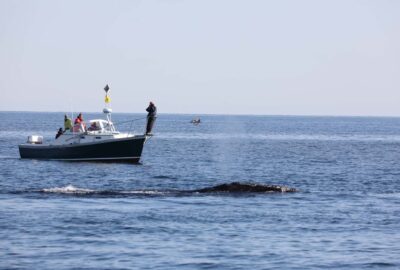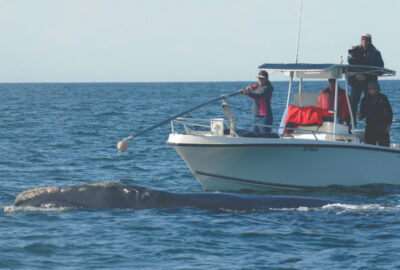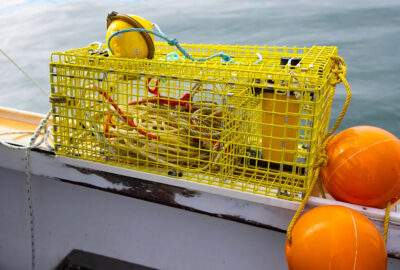A Q&A on Sampling with our Right Whale Research Team
By New England Aquarium on Tuesday, August 08, 2023


During summer fieldwork, our Right Whale Research team is out on the water collecting biological samples from the whales they spot. Here, Amy and Kelsey answer questions about how they collect samples from right whales and why it’s so important.
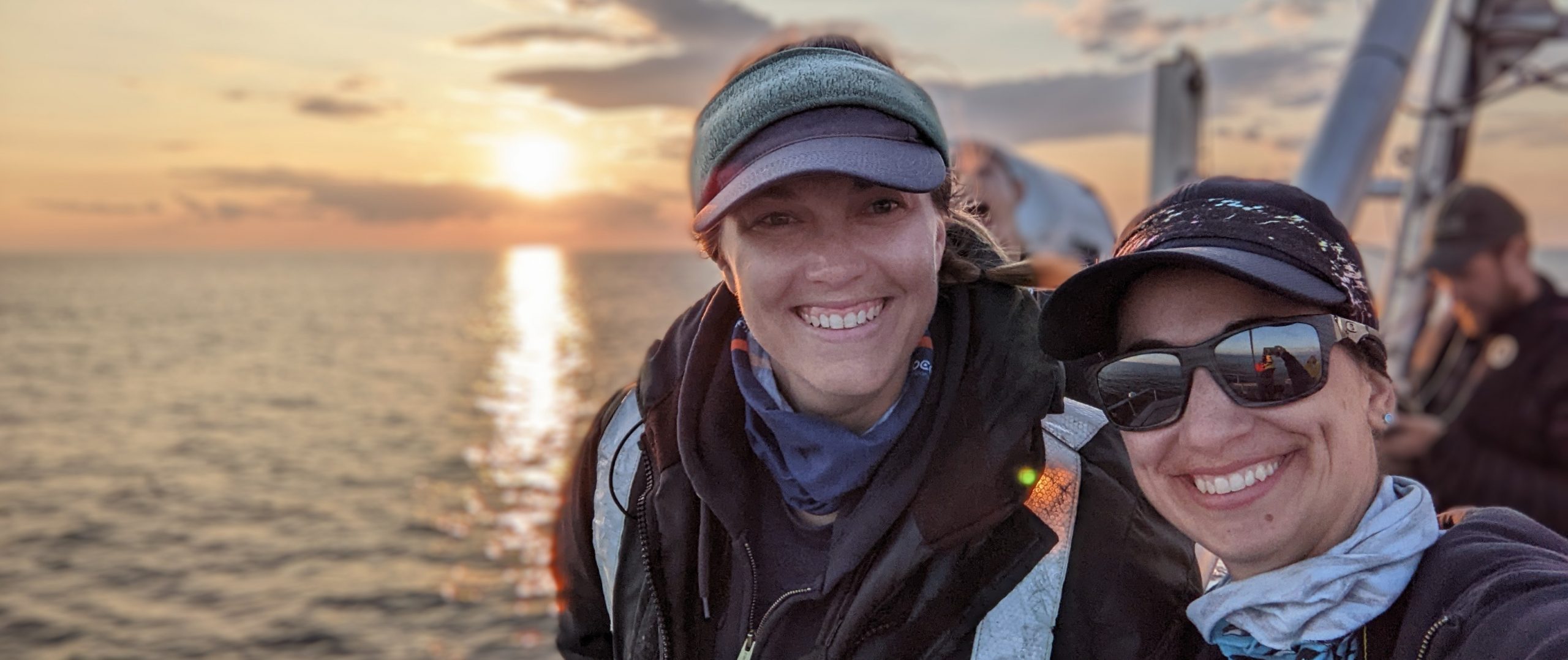
Why do we collect biological samples from whales?
Photographs give us all sorts of information about a whale’s identity, visual health, and recent human interactions (based on scars). But collecting biological samples allows us to get a glimpse of what is going on underneath all of that blubber, or in some cases, in the blubber itself. All sorts of information can be gleaned from these samples, including genetics, pregnancy, stress, and diet, which just adds to our overall knowledge of the individual, the species, and how we can better protect them.
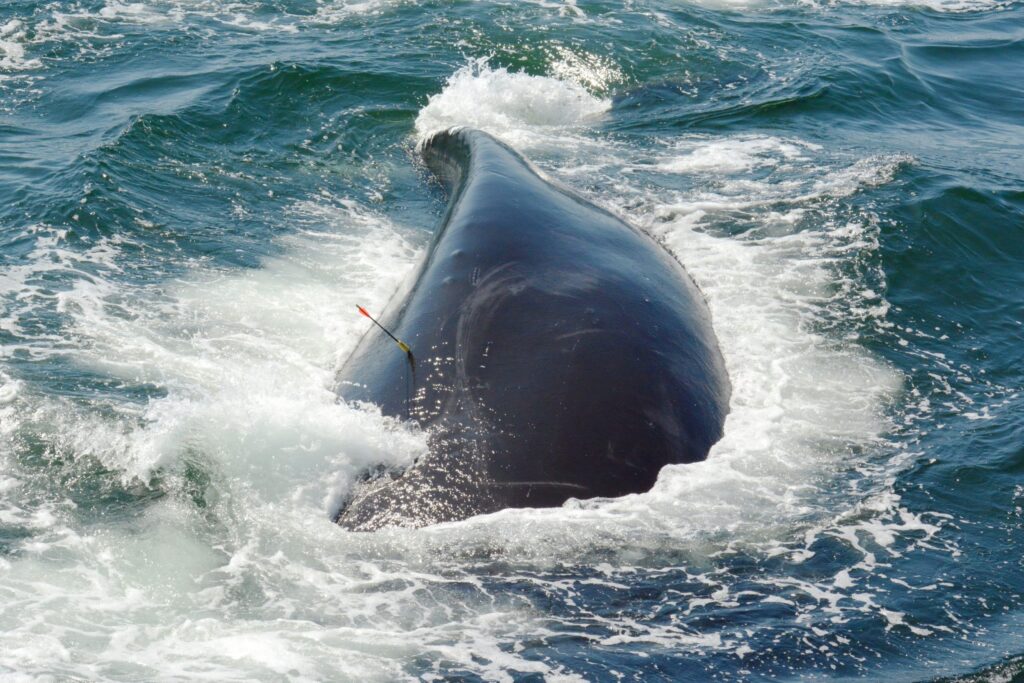
What are the methods we use to collect samples?
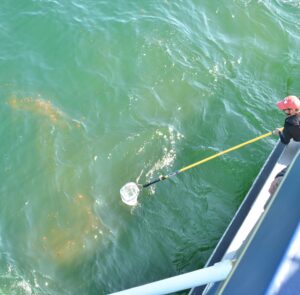
There are two types of biological samples that we routinely collect on the water: Biopsy samples, which are typically a segment of skin and blubber collected directly from the whale, and poop samples collected from the surface of the water.
Our goal is to genetically sample every North Atlantic right whale in the population. So during fieldwork, part of our mission is to find and biopsy sample the ~20 percent of whales that have never been sampled. Individual identification is the first step once a whale is sighted to determine if that whale needs to be sampled. If the decision is made to biopsy dart the whale, then the boat driver maneuvers the boat parallel to the whale and within range, while a trained scientist uses a crossbow and modified arrow with a hollow tip to shoot at the whale’s back and collect a skin and blubber sample. Once the arrow has bounced off the whale’s side (hopefully with a sample in the hollow tip), it is retrieved via a net on a long pole.
If we are lucky enough to see (or more often smell) orange-brown poop floating at the surface behind a whale, we spring into action as the poop often sinks or dissipates quickly. As the captain maneuvers the boat alongside the poop, a specialized fine mesh net on the end of a long pole is used to scoop as much poop as possible from the surface of the water. The net and sample are subsequently placed in the “poop bucket,” where the sample can then be transferred to sample containers.
We don’t see poop as often as some may think. While whales are constantly eating, and likely pooping a lot, it isn’t always seen, or it dissipates by the time we get the boat to the area, so it is always a good day when we manage to get our gloved hands on a sample.
How are the samples processed on the boat?
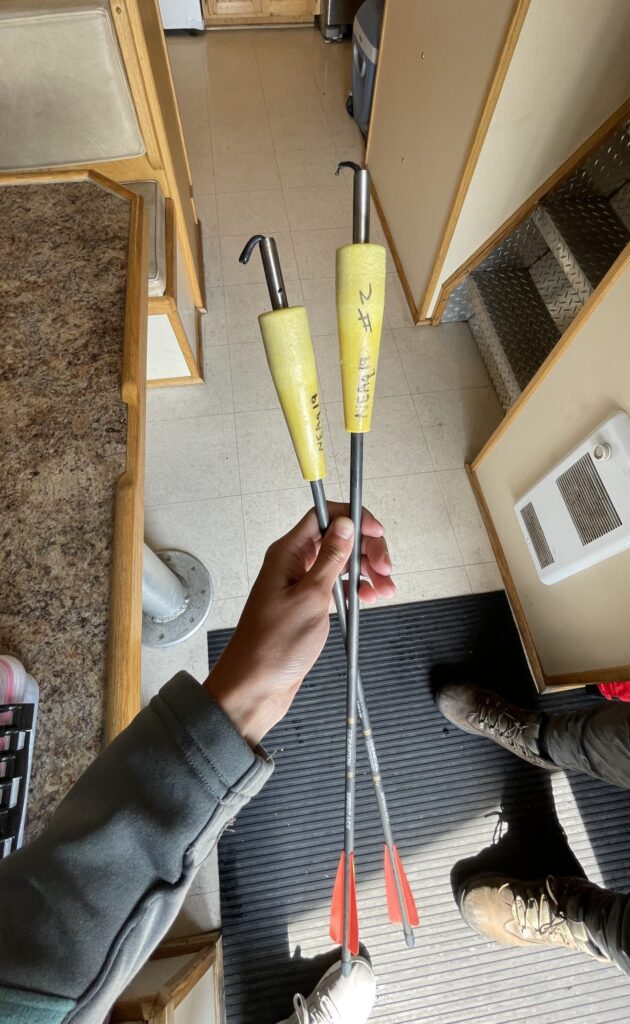
Once the arrow and sample have been brought on board, the scientist uses tweezers to remove the skin and blubber from the tip and then takes a scalpel to cut the sample into smaller pieces. These subsamples are then placed in extensively labeled vials that are subsequently frozen or contain a DMSO solution for storage and transport to our various colleagues, who will process these samples in their respective labs. The collection of those samples is noted in the photo-identification database so results can be linked to the individual whale and its life history data.
Since whale fecal samples are used in a variety of ways, they are also preserved in different ways. Some are directly frozen, and others are put into a solution before being frozen. Most importantly, they are labeled and sealed very well, to best contain the smell for the remainder of our trip. Don’t worry, the samples go into a specific “poop freezer” far away from our food.
Here’s where we send our samples for further study:
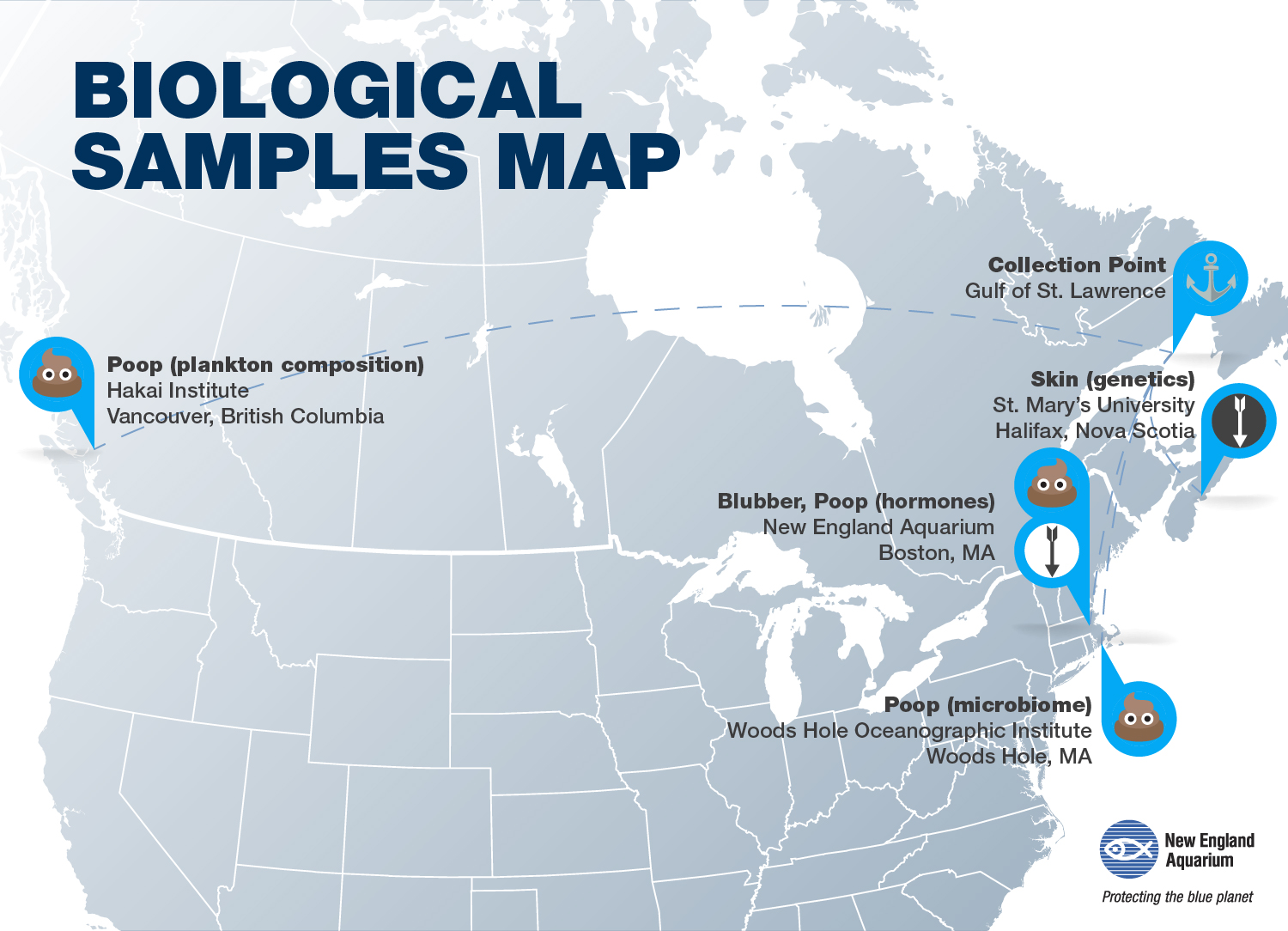
What data do we get from each form of collection?
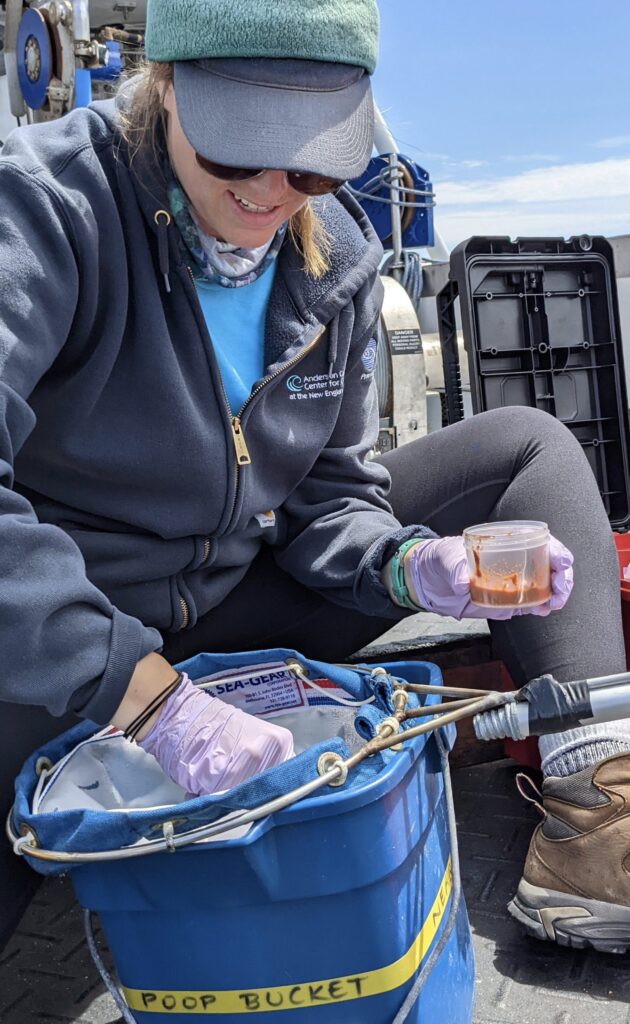
Biopsy samples can provide us with genetic, epigenetic, and hormonal information. St. Mary’s University in Halifax extracts invaluable genetic and epigenetic data from skin samples. Genetic data includes whale identification, sex, maternity, and sometimes paternity. Whereas epigenetics looks more specifically at whether a right whale’s gene expression changes after a physically traumatic event, like entanglement. The Aquarium has a lab behind the scenes that uses a tiny piece of whale blubber to investigate levels of hormones present in an individual whale, specifically looking at stress and reproductive hormones.
Poop samples can give us hormone levels, diet composition, and gut microbiome data. Similar to the newer method of using blubber, the Aquarium lab has been using poop samples to investigate reproductive and stress hormone levels for over two decades. For example, if a female whale has extremely high progesterone levels, then it can be inferred that she was pregnant when the sample was collected. The Hakai Institute is looking at the genetics of the prey to determine plankton composition present in the poop, from which they can extrapolate what the whale is actually eating in a particular location. This is important, especially in relatively new habitats like the Gulf of St. Lawrence, because it gives us insight into the whale’s diet and if it is getting a sufficient amount of nutrients from the plankton present in the water column. Meanwhile, WHOI is looking into the microbiome of right whales to better understand their digestion.
And why does it matter?
Firstly, sharing these samples with various scientists and organizations is a great way to collaborate and share data to advance our knowledge, something that the North Atlantic right whale community has always been really great at doing. And secondly, the wealth of data that we are able to glean from a small biological sample is mind-blowing. Understanding what is happening on an individual level can provide insight into the overall health and trajectory of the population, which is very important in our mission to better protect North Atlantic right whales moving forward.

